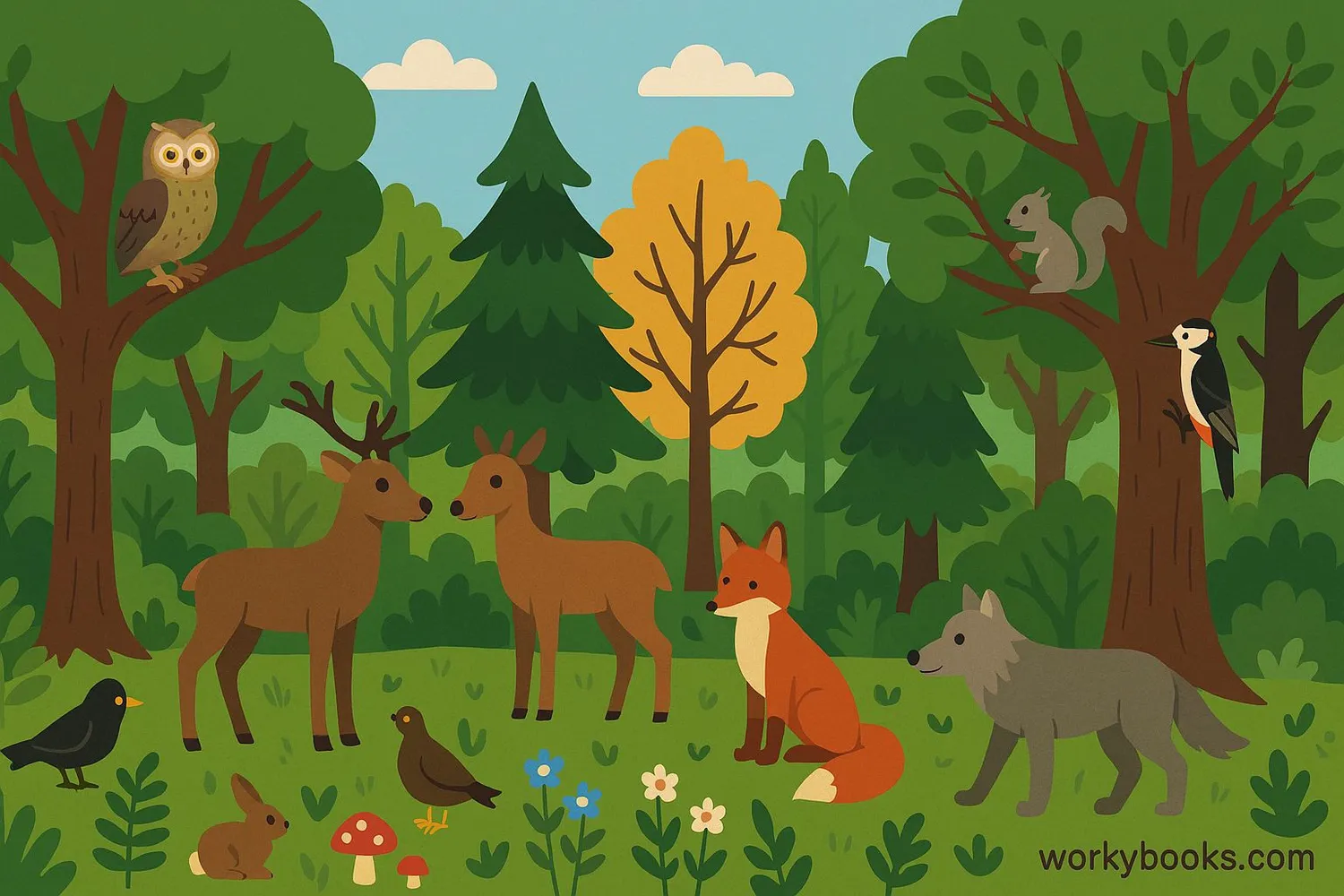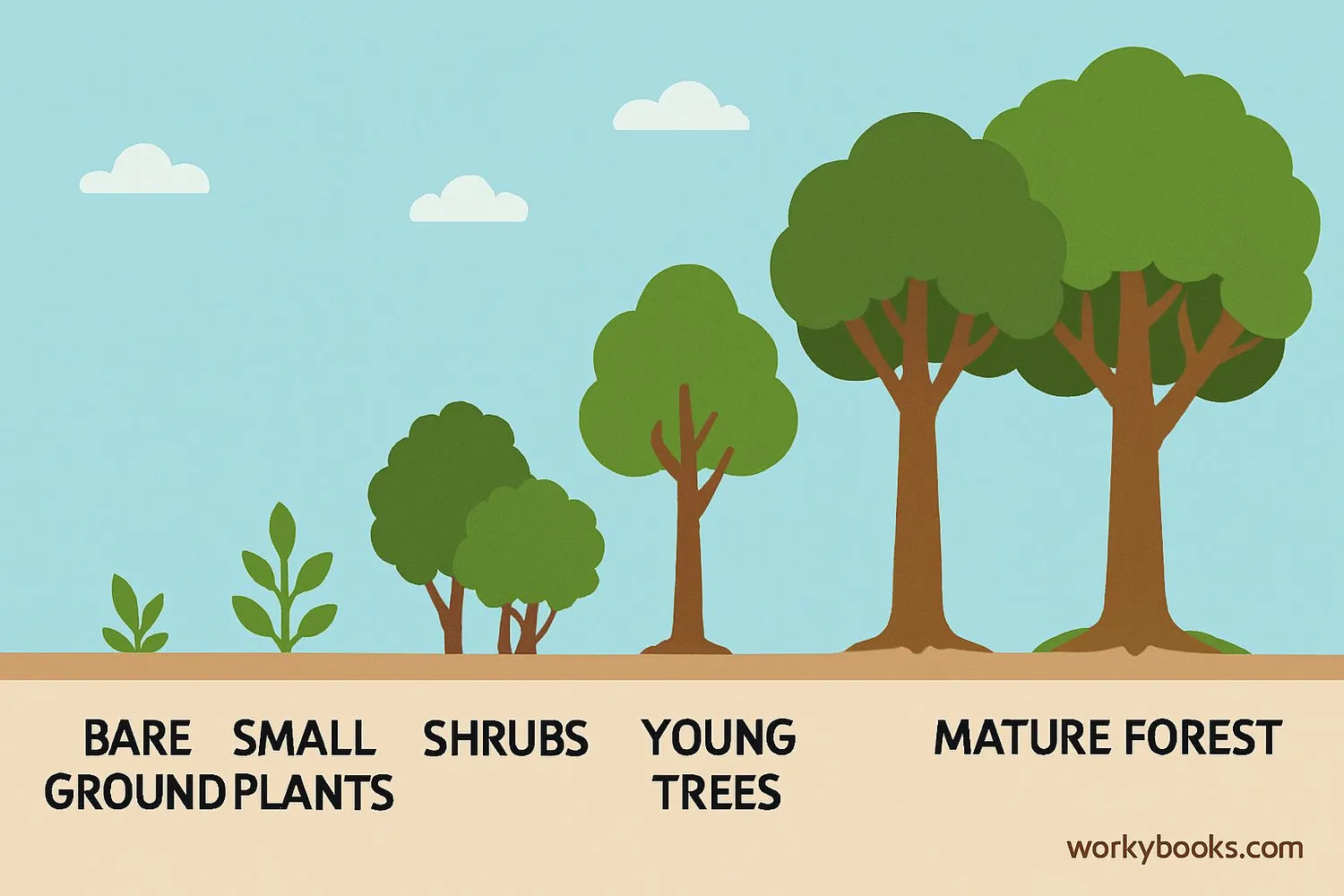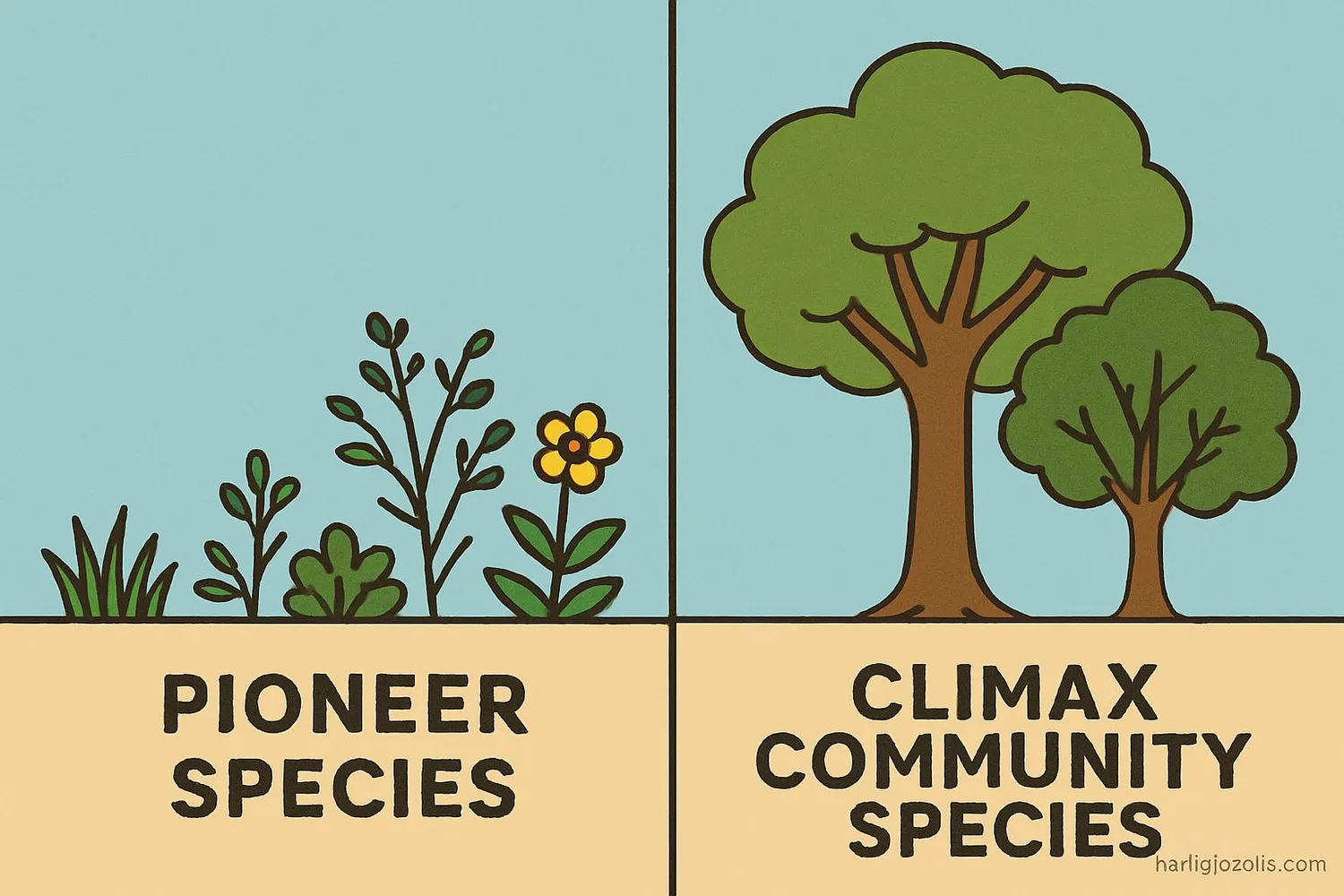Climax Community - Definition, Examples, Quiz, FAQ, Trivia
Discover how ecosystems reach their final stable state in nature!
What is a Climax Community?

A climax community is the final, stable stage of an ecosystem. It's like nature's finished masterpiece! After many changes over time, the plants and animals in an area reach a balanced state where the community remains mostly the same unless something major disturbs it.
Think of it like building with blocks. At first, you might try different arrangements, but eventually you create a stable structure that doesn't easily fall over. In nature, a climax community is that stable structure where plants and animals have found their perfect places.
Ecosystem Fact!
Climax communities can be different types like forests, grasslands, or deserts, depending on the climate and location!
How a Climax Community Forms

The process of developing a climax community is called ecological succession. It happens in stages, with different plants and animals appearing at each step. Here's how it works:
Pioneer Stage
Hardy plants like lichens and mosses begin growing on bare rock or soil
Intermediate Stage
Grasses, shrubs, and small trees start to grow
Young Forest
Fast-growing trees shade out earlier plants
Mature Community
Slow-growing, shade-tolerant trees become established
Climax Community
Stable, diverse ecosystem that remains mostly unchanged
This process can take decades or even centuries! The specific type of climax community that develops depends on the climate, soil, and location. For example, in rainy areas, the climax community might be a dense forest, while in dry areas it might be grassland.
Succession Fact!
After a forest fire or volcanic eruption, the process of succession starts all over again, gradually rebuilding toward the climax community.
Climax Community vs Pioneer Species

Pioneer species and climax communities represent opposite ends of the ecological succession process. Understanding their differences helps us appreciate how ecosystems develop over time.
| Feature | Pioneer Species | Climax Community |
|---|---|---|
| Role | First to colonize barren areas | Final, stable community |
| Examples | Lichens, mosses, dandelions | Oak trees, maple trees, mature forest animals |
| Growth Speed | Grow quickly | Grow slowly |
| Lifespan | Short-lived | Long-lived |
| Sunlight Needs | Need full sunlight | Can tolerate shade |
| Diversity | Low diversity | High diversity |
| Stability | Change quickly | Remain stable for long periods |
Both pioneer species and climax communities are important! Pioneer species prepare the ground for later plants by breaking down rocks into soil and adding nutrients. Climax communities provide stable homes for many different species and help maintain balance in ecosystems.
Climax Community Quiz
Test your knowledge about climax communities with this quiz! Answer all 5 questions to see how much you've learned.
Frequently Asked Questions
Here are answers to some common questions about climax communities:
Fun Climax Community Trivia
Discover some amazing facts about climax communities!
Time Travel
Some climax communities take over 1,000 years to fully develop! The ancient forests we see today began their journey long before modern cities existed.
Size Matters
Climax communities can be tiny or enormous! A climax community might be as small as a pond or as large as an entire forest covering thousands of square miles.
Special Adaptations
Plants in climax communities often have special adaptations. Some trees have canopies that block sunlight, while others have seeds that can germinate in deep shade.
Constant Change
While climax communities are stable, they're not completely unchanging. Small changes happen constantly as trees fall, creating openings for new growth, maintaining diversity.


